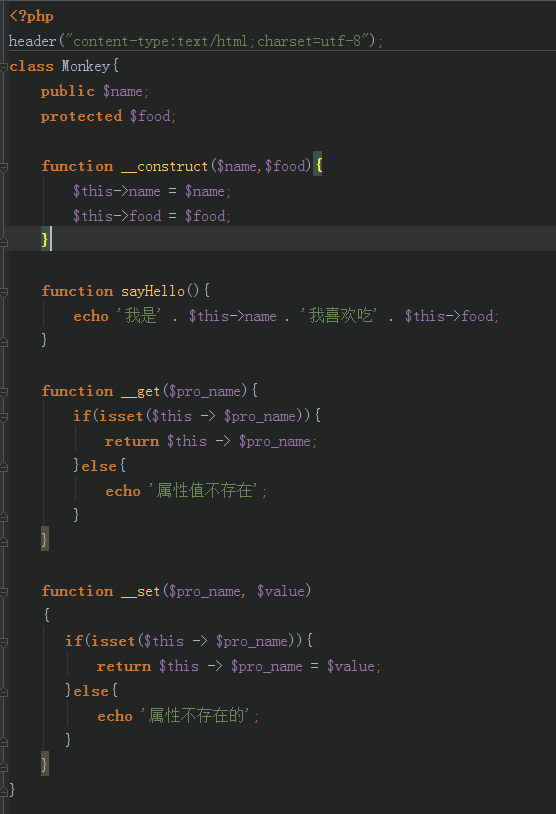Summary of _construct() method examples
This article mainly introduces the difference between the constructor _construct() and _initialize() of the class in ThinkPHP. The introduction is very detailed. I believe it has certain reference value for everyone. Friends who need it can read it together. Take a look. Preface I believe that PHPers who are familiar with THINKPHP are basically familiar with the _initialize() method. It seems that we rarely use _construct() unless we write a plug-in ourselves, otherwise it is really rarely used. Looking at the code today, I suddenly saw _construct(), the construction method that comes with PHP. My first impression was that it was relatively unfamiliar. Although I often encountered it when I was learning Java before, I have basically forgotten it after a long time. My usual habit is to write down the key points of knowledge in my small notebook, but since I haven’t written for a long time, the elegant and flexible writing style I used to have in high school has completely disappeared into another dimension. In addition to the previous thoughts, I came to learn how to write blogs from technology experts. This is not to show off, but just to prevent every bit of the results of my work from dissipating with the passage of time. Let’s take a look at the detailed introduction. Paste the code first (my environment is wamp
1. Detailed introduction to _initialize()

Introduction: This article mainly introduces the difference between the constructor _construct() and _initialize() of the class in ThinkPHP. The introduction in the article is very detailed. I believe it will be useful to everyone. For reference, friends in need can take a look below. Preface I believe that phpers who are familiar with THINKPHP are basically familiar with the _initialize() method. We rarely use _construct() unless we write a plug-in ourselves. It is really rarely used. Today I looked at the code and suddenly saw _construc...
2. php Summary of usage of constant() function instances

# Introduction: When you see this name, it gives you a very advanced feeling. Yes, the magic method is indeed very advanced. , what are magic methods? In PHP, methods starting with two underscores are called "Magic methods", such as __construct(), __destruct (), __clone() mentioned before. And __call(),,__get(), __set(),__sleep(), __wakeup(), __toS...
3. About the php __construct() function 10 recommended articles
Introduction: When you see this name, you have a very advanced feeling. Yes, the magic method is indeed very advanced. So, what is magic? What about methods? In PHP, methods starting with two underscores are called "Magic methods", such as __construct(), __destruct (), __clone(), and __call(). ),,__get(), __set(),__sleep(), __wakeup(), __toS...
4. 10 articles about php sleep() function Recommendation

5.
Detailed explanation of magic method __get() instance (php advanced object-oriented tutorial 2)

6.
Introduction to the sixteen magic methods of PHP Introduction: In PHP, methods starting with two underscores __ are called magic methods (Magic methods). These methods act as played a decisive role. Magic methods include: __construct(), class constructor 7. Simple code introduction to PHP singleton mode ##Introduction: 

8. Detailed explanation of problems encountered in inheritance of PHP singleton mode

Introduction:
9. Detailed introduction to classes in ThinkPHP The difference between constructor _construct() and _initialize()

10.
A concise summary of Magic Method in PHP classes

[Related Q&A recommendations]:
DateTime in PHP 7.1:: Does __construct() support millisecondsHow does the PHP function pass only the specified parametersHow does the PHP function pass only the specified parametersjavascript - What is the difference between the "constructor" with the first letter capitalized in js and the "constructor" starting with a double underscore in a class? Can there be two constructors in a php class?
The above is the detailed content of Summary of _construct() method examples. For more information, please follow other related articles on the PHP Chinese website!

Hot AI Tools

Undresser.AI Undress
AI-powered app for creating realistic nude photos

AI Clothes Remover
Online AI tool for removing clothes from photos.

Undress AI Tool
Undress images for free

Clothoff.io
AI clothes remover

Video Face Swap
Swap faces in any video effortlessly with our completely free AI face swap tool!

Hot Article

Hot Tools

Notepad++7.3.1
Easy-to-use and free code editor

SublimeText3 Chinese version
Chinese version, very easy to use

Zend Studio 13.0.1
Powerful PHP integrated development environment

Dreamweaver CS6
Visual web development tools

SublimeText3 Mac version
God-level code editing software (SublimeText3)

Hot Topics
 1664
1664
 14
14
 1423
1423
 52
52
 1318
1318
 25
25
 1269
1269
 29
29
 1248
1248
 24
24
 PHP and Python: Comparing Two Popular Programming Languages
Apr 14, 2025 am 12:13 AM
PHP and Python: Comparing Two Popular Programming Languages
Apr 14, 2025 am 12:13 AM
PHP and Python each have their own advantages, and choose according to project requirements. 1.PHP is suitable for web development, especially for rapid development and maintenance of websites. 2. Python is suitable for data science, machine learning and artificial intelligence, with concise syntax and suitable for beginners.
 Explain secure password hashing in PHP (e.g., password_hash, password_verify). Why not use MD5 or SHA1?
Apr 17, 2025 am 12:06 AM
Explain secure password hashing in PHP (e.g., password_hash, password_verify). Why not use MD5 or SHA1?
Apr 17, 2025 am 12:06 AM
In PHP, password_hash and password_verify functions should be used to implement secure password hashing, and MD5 or SHA1 should not be used. 1) password_hash generates a hash containing salt values to enhance security. 2) Password_verify verify password and ensure security by comparing hash values. 3) MD5 and SHA1 are vulnerable and lack salt values, and are not suitable for modern password security.
 PHP in Action: Real-World Examples and Applications
Apr 14, 2025 am 12:19 AM
PHP in Action: Real-World Examples and Applications
Apr 14, 2025 am 12:19 AM
PHP is widely used in e-commerce, content management systems and API development. 1) E-commerce: used for shopping cart function and payment processing. 2) Content management system: used for dynamic content generation and user management. 3) API development: used for RESTful API development and API security. Through performance optimization and best practices, the efficiency and maintainability of PHP applications are improved.
 PHP: A Key Language for Web Development
Apr 13, 2025 am 12:08 AM
PHP: A Key Language for Web Development
Apr 13, 2025 am 12:08 AM
PHP is a scripting language widely used on the server side, especially suitable for web development. 1.PHP can embed HTML, process HTTP requests and responses, and supports a variety of databases. 2.PHP is used to generate dynamic web content, process form data, access databases, etc., with strong community support and open source resources. 3. PHP is an interpreted language, and the execution process includes lexical analysis, grammatical analysis, compilation and execution. 4.PHP can be combined with MySQL for advanced applications such as user registration systems. 5. When debugging PHP, you can use functions such as error_reporting() and var_dump(). 6. Optimize PHP code to use caching mechanisms, optimize database queries and use built-in functions. 7
 How does PHP type hinting work, including scalar types, return types, union types, and nullable types?
Apr 17, 2025 am 12:25 AM
How does PHP type hinting work, including scalar types, return types, union types, and nullable types?
Apr 17, 2025 am 12:25 AM
PHP type prompts to improve code quality and readability. 1) Scalar type tips: Since PHP7.0, basic data types are allowed to be specified in function parameters, such as int, float, etc. 2) Return type prompt: Ensure the consistency of the function return value type. 3) Union type prompt: Since PHP8.0, multiple types are allowed to be specified in function parameters or return values. 4) Nullable type prompt: Allows to include null values and handle functions that may return null values.
 The Enduring Relevance of PHP: Is It Still Alive?
Apr 14, 2025 am 12:12 AM
The Enduring Relevance of PHP: Is It Still Alive?
Apr 14, 2025 am 12:12 AM
PHP is still dynamic and still occupies an important position in the field of modern programming. 1) PHP's simplicity and powerful community support make it widely used in web development; 2) Its flexibility and stability make it outstanding in handling web forms, database operations and file processing; 3) PHP is constantly evolving and optimizing, suitable for beginners and experienced developers.
 PHP vs. Python: Understanding the Differences
Apr 11, 2025 am 12:15 AM
PHP vs. Python: Understanding the Differences
Apr 11, 2025 am 12:15 AM
PHP and Python each have their own advantages, and the choice should be based on project requirements. 1.PHP is suitable for web development, with simple syntax and high execution efficiency. 2. Python is suitable for data science and machine learning, with concise syntax and rich libraries.
 PHP and Python: Code Examples and Comparison
Apr 15, 2025 am 12:07 AM
PHP and Python: Code Examples and Comparison
Apr 15, 2025 am 12:07 AM
PHP and Python have their own advantages and disadvantages, and the choice depends on project needs and personal preferences. 1.PHP is suitable for rapid development and maintenance of large-scale web applications. 2. Python dominates the field of data science and machine learning.




